Understanding Lanolin: A Natural Wonder
Let's delve into the world of lanolin and what it really is, simplified for easy understanding. Lanolin, essentially a natural wax, is derived from sheep's wool. It's composed of a blend of various fatty acids and alcohol, working together to provide waterproofing and protection to the wool. Think of it as nature's way of keeping sheep's wool soft and shielded from the elements. This remarkable substance bears similarities to the oils our skin produces to keep it moisturised and safeguarded. Lanolin finds its way into numerous skincare products, such as baby oil, diaper rash creams, and lip balms, renowned for their ability to nurture and defend the skin. However, it's vital to recognise that, while natural, lanolin isn't always harmless. Ingesting lanolin can lead to lanolin poisoning, which poses serious health risks. Therefore, it's crucial to handle lanolin-based products with care and keep them out of reach from areas where ingestion could occur.
Lanolin: The Ultimate Solution for Leak-Free Modern Cloth Nappies
In the world of modern cloth nappies, finding the perfect solution to prevent leaks can be a game-changer for both babies and parents alike. Enter lanolin – a natural wonder that not only benefits your baby's wool covers but also offers a myriad of uses for moms.
Imagine having a heavy wetter on your hands, and despite trying various solutions, leaks still seem inevitable. This is where lanolin steps in as the hero ingredient. By lanolising your wool covers, you create a water-resistant barrier that ensures ultimate protection against leaks. No matter how much absorbency your baby's cloth nappy has underneath, a properly lanolised wool cover provides unmatched security and peace of mind.
But lanolin's benefits extend beyond just cloth nappies. Moms can also reap its rewards for their own care. As Mimi would say, lanolin is perfect for "Nips and Lips." It serves as an excellent moisturiser for soothing sore nipples during breastfeeding and keeping lips hydrated and nourished. Moreover, lanolin's gentle properties make it ideal for sensitive skin conditions like eczema, offering relief from discomfort and soothing irritation.
Now that we've explored the versatility of lanolin and its benefits for both baby and mom, let's dive deeper into the process of lanolising wool covers. By mastering this technique, you can ensure your baby enjoys uninterrupted sleep and maximum comfort throughout the night.
Step-by-Step Guide: How to Lanolise a Wool Cover
Lanolin is akin to the ultimate solution for cloth nappy covers. A wool cover can be reused numerous times before its next wash, offering exceptional durability when lanolised. Here's a detailed guide on how to replenish the natural waterproofing of your wool covers using lanolin, ensuring their effectiveness as a reliable nappy cover:
You can begin the lanolising process with your wool cover either wet or dry.
- Wash Your Wool Cover: If your wool cover has been previously lanolised and used, give it a gentle wash to prepare it for the lanolising process.
- Prepare the Lanolin Solution: Take a normal-sized eating bowl and fill it with hot water from a kettle. Add about half a teaspoon of lanolin into the bowl. Stir until the lanolin melts completely in about half a cup of hot water.
- Emulsify the Lanolin: To ensure even distribution, add half a teaspoon of soap into the lanolin mixture. Any soap will do. Stir until the mixture turns a milky, cloudy colour, indicating that the lanolin has emulsified with the soap and water.
- Prepare a Larger Bowl of Warm Water: Fill a larger bowl with warm water, approximately three-quarters of a litre. Pour the lanolin mixture into the warm water and mix thoroughly.
- Soak the Wool Cover: Submerge the wool cover into the lanolin mixture in the larger bowl. Allow it to soak for at least a couple of hours, ensuring that the lanolin thoroughly coats the wool cover.
- Remove and Wring Out Excess Water: After soaking, remove the wool cover from the lanolin mixture and gently wring out any excess water.
- Dry the Wool Cover: Lay a towel flat on a surface and place the wet wool cover onto the towel. Wrap the wool cover in the towel and gently press to remove most of the moisture.
- Sun-Dry the Wool Cover: Hang the wool cover outside in the sun for about 20 minutes to half an hour. The sun's rays will help to further dry and set the lanolin.
- Final Drying: Complete the drying process indoors. Once completely dry, your wool cover is ready to be used over your baby's absorbency or cloth nappy.
By following these simple steps, you can effectively lanolise your wool cover, ensuring its water-repellent properties are restored and ready to provide optimal protection for your baby's cloth nappies.
Lanolin emerges as a natural marvel with a plethora of benefits, both for baby's cloth nappies and mom's skincare routine. Its resemblance to our skin's natural oils makes it a perfect solution for nurturing and safeguarding delicate skin. However, it's crucial to handle lanolin-based products with care to avoid any potential risks associated with ingestion.
When it comes to modern cloth nappies, lanolin takes the spotlight as the ultimate solution for leak prevention. Lanolising wool covers transforms them into reliable barriers against leaks, ensuring babies stay dry and comfortable throughout the day and night. Moreover, moms can harness the power of lanolin for their own care, finding relief from sore nipples during breastfeeding and soothing sensitive skin conditions like eczema.
To effectively lanolise a wool cover, follow these simple steps outlined in our comprehensive guide. By replenishing the natural waterproofing of your wool covers with lanolin, you can guarantee maximum protection and comfort for your little one, paving the way for uninterrupted sleep and happy days ahead.



![Swim Nappy Bundle [Ship Oct 5 - 10] - Mimi & Co](http://mimiandco.com.au/cdn/shop/files/swim-nappy-bundle-ship-oct-5-10-5796576.jpg?v=1761125410)

![Toilet Training Undies Pants [Jan Preorder] - Mimi & Co](http://mimiandco.com.au/cdn/shop/files/toilet-training-undies-pants-jan-preorder-6316642.jpg?v=1766216229&width=1200)
![Reusable Bamboo Mimi™ Wipes [5 Pack] - Mimi & Co](http://mimiandco.com.au/cdn/shop/files/reusable-bamboo-mimi-wipes-5-pack-7600782.jpg?v=1761445103)




![Reusable Mimi® Menstrual Underwear [Shipping 31/9] - Mimi & Co](http://mimiandco.com.au/cdn/shop/files/reusable-mimi-menstrual-underwear-shipping-319-6508918.png?v=1759809525)







![One Size Fits Most Preflat [PreOrder] - Mimi & Co](http://mimiandco.com.au/cdn/shop/files/one-size-fits-most-preflat-preorder-761880.webp?v=1759809321&width=104)



![Toilet Training Undies Pants [Jan Preorder] - Mimi & Co](http://mimiandco.com.au/cdn/shop/files/toilet-training-undies-pants-jan-preorder-6316642.jpg?v=1766216229&width=104)

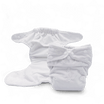








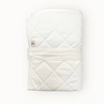


![Reusable Bamboo Wipes [5 Pack] - Mimi & Co](http://mimiandco.com.au/cdn/shop/files/reusable-bamboo-wipes-5-pack-580411.webp?v=1764820089&width=104)
![Organic Cotton Wipes [5 Pack] - Mimi & Co](http://mimiandco.com.au/cdn/shop/files/organic-cotton-wipes-5-pack-7079645.png?v=1759809401&width=104)





![Reusable Mimi® Menstrual Underwear [Shipping 31/9] - Mimi & Co](http://mimiandco.com.au/cdn/shop/files/reusable-mimi-menstrual-underwear-shipping-319-6508918.png?v=1759809525&width=104)





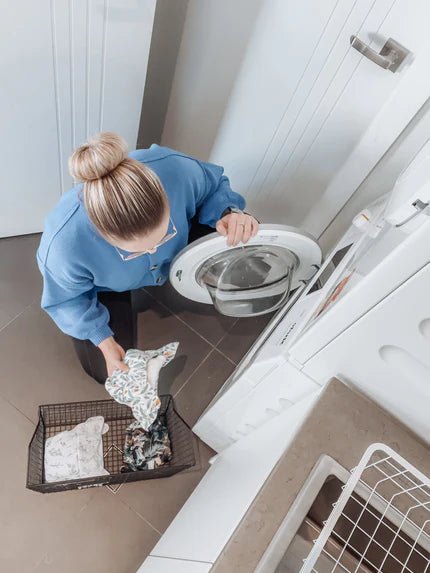







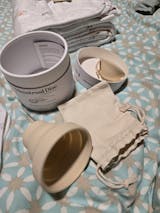

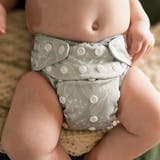







Leave a comment
All comments are moderated before being published.
This site is protected by hCaptcha and the hCaptcha Privacy Policy and Terms of Service apply.